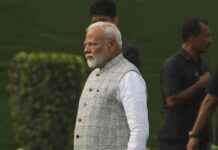E-commerce Growth Driven by Low-Income Groups and Small Cities: Report
The landscape of e-commerce in India is experiencing a significant shift, driven by the increasing adoption of online shopping among low-income groups and residents of small cities. A recent report titled “Assessing the Net Impact of E-commerce on Employment and Consumer Welfare in India” by the Pahle India Foundation sheds light on the changing consumer behavior and economic implications of e-commerce in the country.
Low-Income Segment as Significant Buyers
One of the key findings of the report is the substantial buyer base that e-commerce platforms have among the lowest income segment in India. Individuals earning below Rs 3 lakh per annum are more likely to utilize e-commerce platforms for their shopping needs compared to other income groups. This trend highlights the growing popularity and accessibility of online retail among those with limited financial resources.
The report is based on a comprehensive survey that included 2,031 offline vendors, 2,062 online vendors, and 8,209 e-commerce consumers across 35 cities in 20 states and union territories. By gathering insights from various stakeholders in the e-commerce ecosystem, the report provides a holistic view of the impact of online retail on employment and consumer welfare in India.
Popular E-commerce Platforms Across Income Groups
Among the e-commerce platforms analyzed in the report, Flipkart emerged as the most popular choice among consumers in most income groups. Amazon also held a significant share of the market, with some classes reporting equal usage of the platform. In the lowest income group, 22% of users preferred Flipkart for their shopping needs, particularly in categories such as apparel and personal care. Amazon followed closely behind at 20%, with other platforms like Meesho, Myntra, and Nykaa also gaining traction among this income category.
In contrast, higher income groups, particularly those earning between Rs 6 lakh and Rs 9 lakh per annum, showed lower usage of Flipkart and Amazon, indicating a shift in consumer preferences based on income levels. Websites such as Myntra, Snapdeal, Nykaa, Ajio, Reliance Digital, and social media platforms were less popular among higher income categories, with usage declining as income levels increased.
The report highlighted that individuals earning between Rs 12 lakh and Rs 15 lakh per annum, as well as those earning Rs 15 lakh and above, reported minimal usage of e-commerce platforms like Amazon, Flipkart, and Meesho. This trend could be attributed to factors such as privacy concerns or reluctance to disclose income information in the survey conducted by the Pahle India Foundation.
Role of Tier 2 Cities in E-commerce Growth
Tier 2 cities have emerged as key drivers of e-commerce sales for the top five platforms analyzed in the report. Among respondents in tier 2 cities, 83% reported using Flipkart for their online shopping, showcasing the strong influence of smaller urban centers on e-commerce adoption. In comparison, usage was slightly lower in tier 1 cities, with 77% of respondents utilizing Flipkart for their shopping needs.
Despite variations in usage across different city categories, Flipkart and Amazon maintained their position as the most popular e-commerce platforms nationwide. This widespread appeal underscores the broad reach and impact of these online retail giants in catering to diverse consumer segments across India.
Employment Generation and Gender Inclusivity in E-commerce
E-commerce has played a significant role in job creation, with the report estimating that the sector generated 15.8 million jobs in India. On average, e-commerce businesses created nine jobs per vendor, indicating the substantial employment opportunities offered by online retail. Interestingly, online vendors employed nearly twice the number of female employees compared to offline vendors, highlighting the gender inclusivity of e-commerce as a growing sector in the Indian economy.
The report’s analysis of how e-commerce is transforming India’s economy underscores the multifaceted impact of online retail on employment generation and consumer welfare. By delving into the nuances of consumer behavior and market dynamics, the report provides valuable insights for policymakers, businesses, and stakeholders in the e-commerce ecosystem.
Challenges and Opportunities in B2C E-commerce Funding
Despite the positive growth trajectory of e-commerce in India, the report also highlighted some challenges faced by the sector, particularly in funding for business-to-consumer (B2C) e-commerce ventures. Data from market intelligence platform Tracxn revealed a decline in B2C e-commerce funding from $2.39 billion in 2019 to $0.29 billion in 2023. Although there was a moderate uptick in funding to $0.39 billion in 2024, it remained significantly lower than the 2019 levels.
The decline in funding for B2C e-commerce ventures poses a challenge for entrepreneurs and businesses looking to scale their online retail operations. As the e-commerce landscape evolves and competition intensifies, securing adequate funding becomes crucial for sustaining growth and innovation in the sector. By addressing funding gaps and fostering a conducive investment environment, stakeholders can unlock the full potential of e-commerce as a driver of economic growth and job creation in India.
Conclusion
The report by the Pahle India Foundation offers a comprehensive analysis of the evolving e-commerce landscape in India, highlighting the increasing adoption of online shopping among low-income groups and residents of small cities. From the preference for platforms like Flipkart and Amazon to the gender inclusivity in e-commerce employment, the report provides valuable insights into the dynamics of online retail in the country.
As e-commerce continues to reshape the Indian economy and consumer behavior, understanding the nuances of this rapidly growing sector becomes essential for businesses, policymakers, and consumers alike. By leveraging the opportunities presented by e-commerce while addressing challenges such as funding constraints, stakeholders can harness the full potential of online retail to drive economic growth, create employment opportunities, and enhance consumer welfare in India.




















